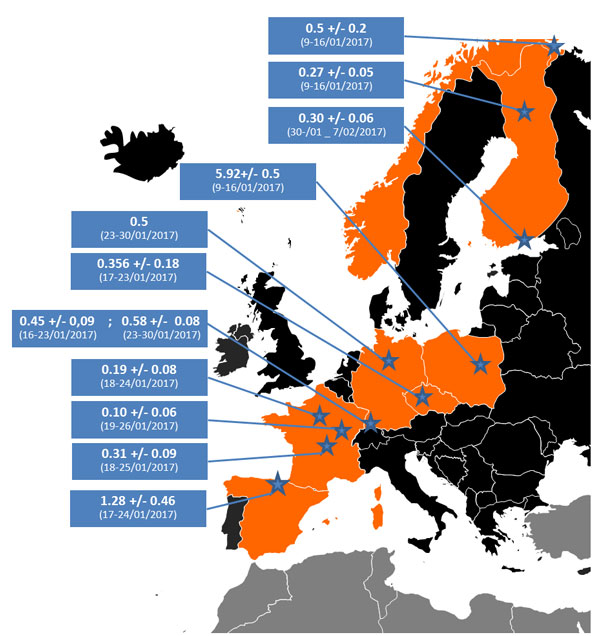Sounds great but it costs money and well….the money goes to states in the form of grants….is your area included?
For Chicago, the stipulations are rather thin on substance:
The Chicago PSN team will implement the following promising strategies to achieve five violent crime reduction objectives: 1) improved murder and non-fatal shooting clearance rates; 2) increased number of illegal firearms recovered from the district;3) reduced retaliatory violence; 4) improved community partnerships to reduce violent crime; and 5) improved use of technology and data to develop efficientand effective local violence reduction strategies.
Attorney General Announces Reinvigoration of Project Safe Neighborhoods
ALEXANDRIA, Va. – Today, Attorney General Jeff Sessions announced several Department of Justice actions to reduce the rising tide of violent crime in America.
Foremost of those actions is the reinvigoration of “Project Safe Neighborhoods,” a program that has been historically successful in bringing together all levels of law enforcement to reduce violent crime and make our neighborhoods safer for everyone. In announcing this recommitment to Project Safe Neighborhoods, the Attorney General issued a memo directing United States Attorneys to implement an enhanced violent crime reduction program that incorporates the lessons learned since Project Safe Neighborhoods launched in 2001.
In a statement on the program, the Attorney General said, “According to the FBI, the violent crime rate has risen by nearly seven percent over the past two years, and the homicide rate has risen by more than 20 percent. We cannot be complacent or hope that this is just an anomaly: we have a duty to take action. Fortunately, we have a President who understands that and has directed his administration to reduce crime. The Department of Justice today announces the foundation of our plan to reduce crime: prioritizing Project Safe Neighborhoods, a program that has been proven to work. Let me be clear – Project Safe Neighborhoods is not just one policy idea among many. This is the centerpiece of our crime reduction strategy. Taking what we have learned since the program began in 2001, we have updated it and enhanced it, emphasizing the role of our U.S. Attorneys, the promise of new technologies, and above all, partnership with local communities. With these changes, I believe that this program will be more effective than ever and help us fulfill our mission to make America safer.”
The Attorney General also announced the following Department of Justice initiatives to help reduce violent crime:
–Additional Assistant United States Attorney Positions to Focus on Violent Crime – The Department is allocating 40 prosecutors to approximately 20 U.S. Attorney’s Offices to focus on violent crime reduction.
-More Cops on the Streets (COPS Hiring Grants) – As part of our continuing commitment to crime prevention efforts, increased community policing, and the preservation of vital law enforcement jobs, the Department will be awarding approximately $98 million in FY 2017 COPS Hiring Grants to state, local, and tribal law enforcement agencies.
-Organized Crime and Drug Enforcement Task Force’s (OCDETF) National Gang Strategic Initiative –The National Gang Strategic Initiative promotes creative enforcement strategies and best practices that will assist in developing investigations of violent criminal groups and gangs into enterprise-level OCDETF prosecutions. Under this initiative, OCDETF provides “seed money” to locally-focused gang investigations, giving state, local, and tribal investigators and prosecutors the resources and tools needed to identify connections between lower-level gangs and national-level drug trafficking organizations.
-Critical Training and Technical Assistance to State and Local Partners –The Department has a vast array of training and technical assistance resources available to state, local and tribal law enforcement, victims groups, and others. To ensure that agencies in need of assistance are able to find the training and materials they need, OJP will make available a Violence Reduction Response Center to serve as a “hot line” to connect people to these resources.
-Crime Gun Intelligence Centers (CGIC) – The Department has provided grant funding to support a comprehensive approach to identifying the most violent offenders in a jurisdiction, using new technologies such as gunshot detection systems combined with gun crime intelligence from NIBIN, eTrace, and investigative efforts. These FY 2017 grants were awarded to Phoenix, AZ, and Kansas City, MO.
-Expand ATF’s NIBIN Urgent Trace Program – The Department will expand ATF’s NIBIN Urgent Trace Program nationwide by the end of the year. Through this program, any firearm submitted for tracing that is associated with a NIBIN “hit” (which means it can be linked to a shooting incident) will be designated an “urgent” trace and the requestor will get information back about the firearm’s first retail purchaser within 24 hours, instead of 5 to 6 business days.





 p
p